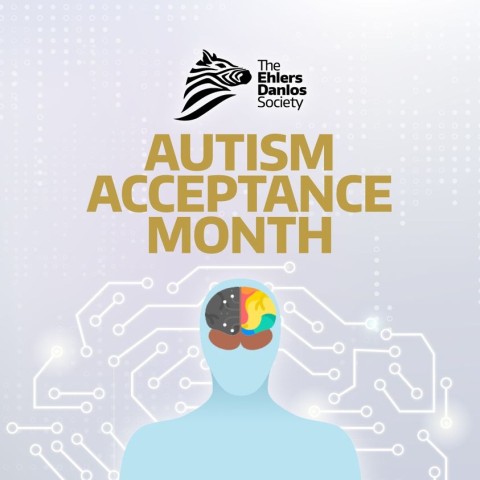
April is Autism Acceptance Month. Studies show that people with joint hypermobility, Ehlers-Danlos syndromes (EDS), and hypermobility spectrum disorder (HSD) have a higher likelihood of being autistic than would be expected by chance.
Research by Brighton and Sussex Medical School (BSMS), led by Dr. Jessica Eccles, found that more than 50% of participants with a diagnosis of Autism, ADHD, or Tourette syndrome demonstrated elevated levels of hypermobility, compared with just 20% of participants from the general population. Neurodivergent participants also reported significantly more symptoms of pain and dysautonomia (e.g., dizziness when standing up) than the comparison group, which was related to the number of hypermobile joints.
Medical professionals should be made aware of this. This is important because autistic people may have symptoms or concerns that could be because they also have a hypermobility-related condition like EDS, and vice versa.
For example:
![]() easy bruising
easy bruising
![]() chronic pain
chronic pain
![]() proprioceptive dysfunction
proprioceptive dysfunction
![]() gastrointestinal problems such as diarrhea or constipation
gastrointestinal problems such as diarrhea or constipation
![]() autonomic dysfunction
autonomic dysfunction
At the Ehlers-Danlos Society, we continue to increase awareness among medical professionals and our community of the relationship between autism and joint hypermobility. We do this in many ways, including at our Events, in our EDS ECHO Programs, and by supporting researchers with their community surveys and funding open access to their publications.
Jane Green, MBE, spoke at our 2023 Global Learning Conference on 'Connecting the dots between autism, ADHD, dyspraxia, EDS, and HSD.' Dr. Carolina Baezo-Velasco is a leading expert in EDS and Autism. A presentation on neurodiversity is available in English, German, French, and Spanish, including a Q&A with Dr. James Kustow. Find these resources and more here: https://www.ehlers-danlos.com/autism-acceptance-month/
#Autism #AutismAcceptanceMonth #EhlersDanlosSyndrome #Hypermobility